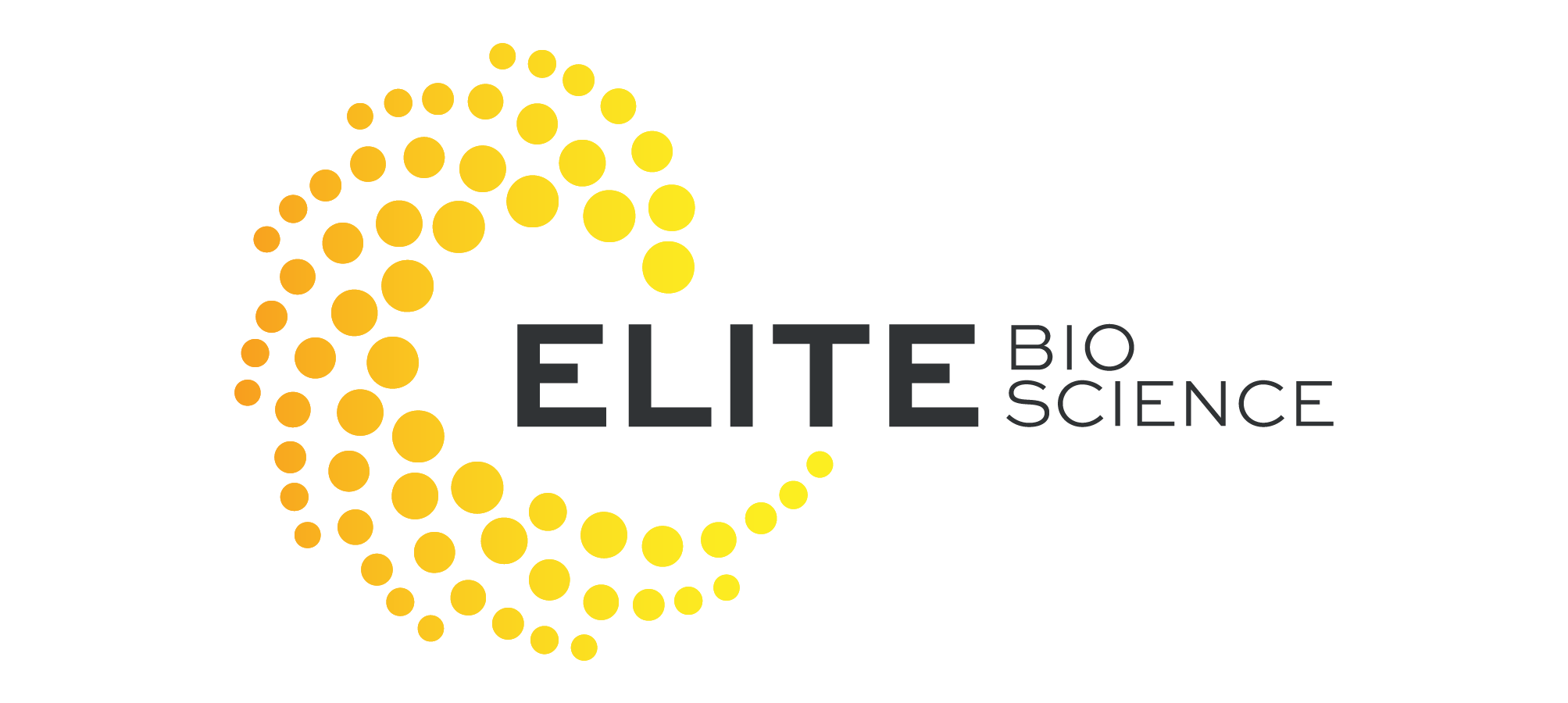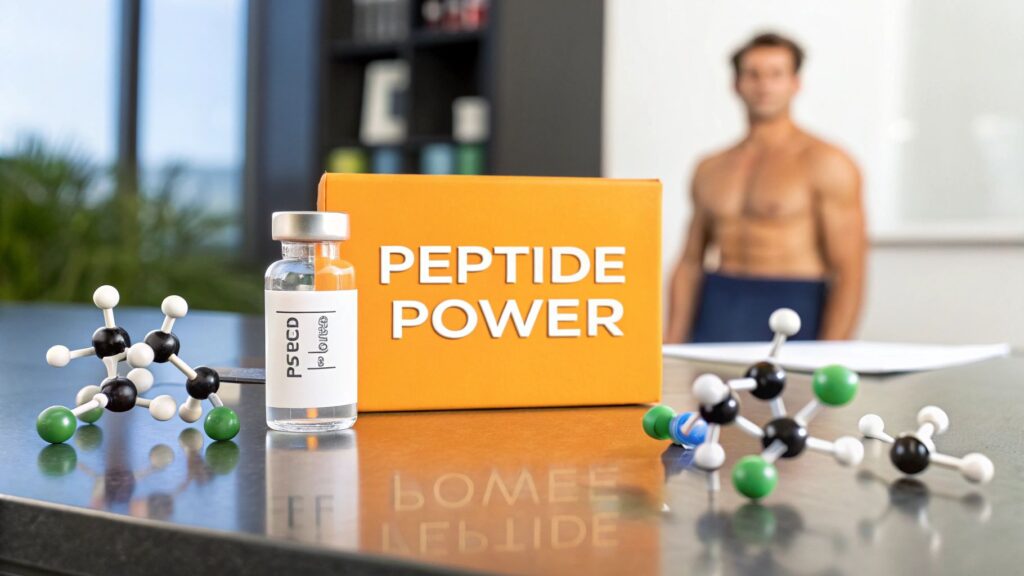In the search for peak performance and vitality, a lot of guys are now looking at peptides to increase testosterone. These are smart, targeted compounds that signal your body to ramp up its own natural hormone production. It's a much more sophisticated approach than just taking traditional supplements or introducing external hormones.
The New Frontier in Hormone Optimization
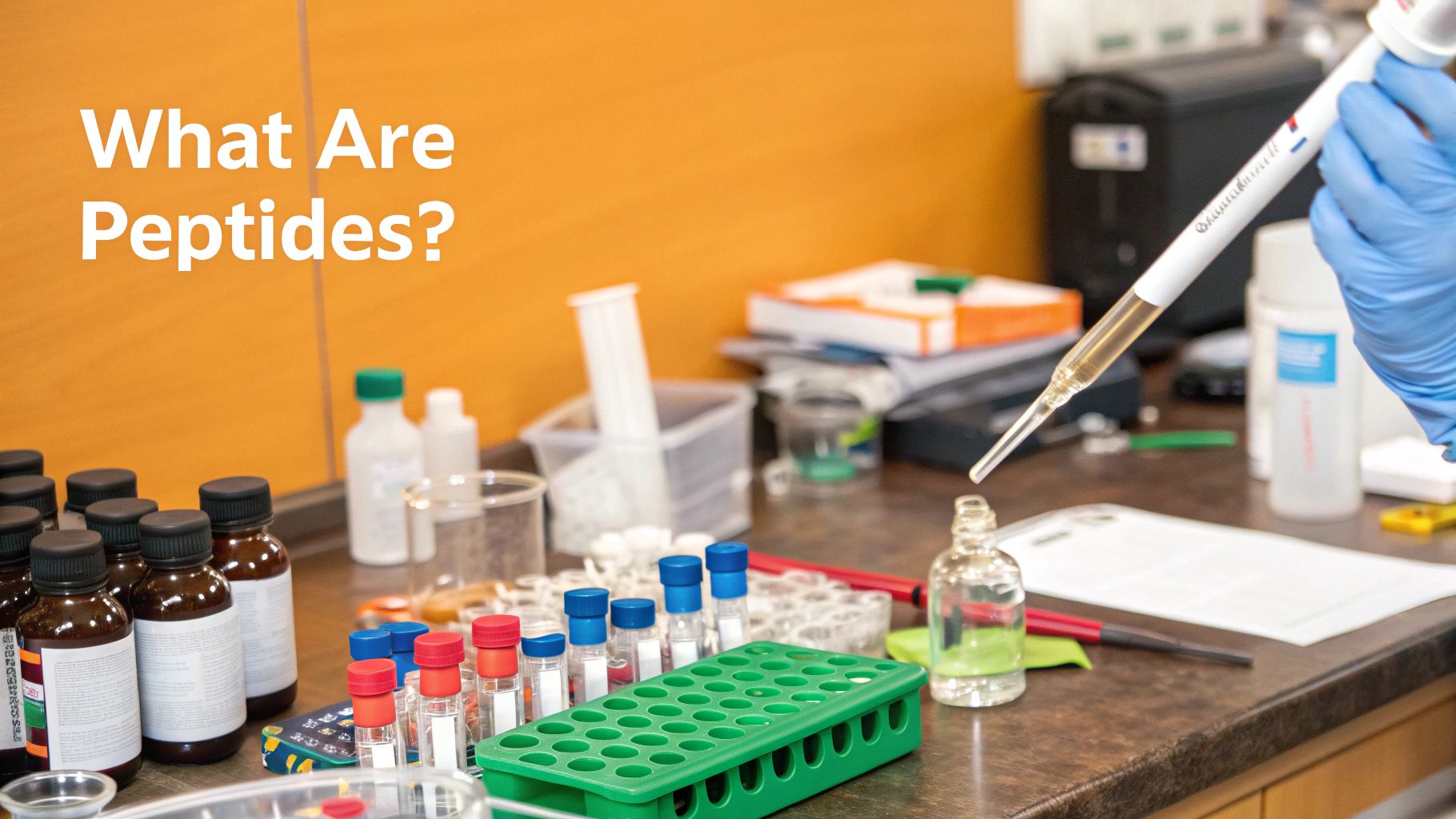
The drive for optimal muscle, energy, and overall well-being almost always leads back to testosterone. While most people are familiar with supplements, a far more precise method is quickly gaining ground in health and fitness circles. This guide will walk you through the world of peptides, a strategy that works with your body’s built-in systems, not against them.
Instead of introducing outside hormones, peptides act like highly specific messengers. They communicate directly with your endocrine system, essentially giving it the instructions to optimize its own testosterone output. Think of them less as replacements and more as keys that unlock your body's own dormant potential.
Why Peptides Are Gaining Traction
This interest in testosterone optimization isn't just a niche trend; it's a massive and expanding market. The global demand for testosterone booster supplements was valued at roughly USD 3.7 billion in 2023 and is expected to surge to USD 6.75 billion by 2030. This boom is a clear reflection of an aging population and a much sharper focus on personal health and wellness, as detailed in recent market analyses of testosterone supplements.
This explosive growth is being pushed by a few key realities:
- An Aging Population: It's a fact of life that testosterone levels naturally start to decline after age 30, leading to frustrating symptoms like fatigue and muscle loss.
- Increased Health Consciousness: More people are taking a proactive stance, looking for ways to maintain their vitality and performance as they get older.
- A Desire for Precision: Many are moving away from brute-force methods and seeking out strategies that work in harmony with the body's natural pathways.
Peptides slide perfectly into this modern approach to health. They represent a more nuanced game plan compared to older, less elegant methods. Instead of a one-size-fits-all sledgehammer, they offer a way to finely tune the body’s hormonal symphony.
This method is less about replacement and more about restoration. The goal is to encourage your body's glands to function optimally, much like a conductor guiding an orchestra to create a balanced, powerful sound.
This fundamental difference is exactly why peptides are becoming such a hot topic. It's an approach that stands apart from traditional methods, including what is covered in detailed discussions about what is bioidentical hormone therapy. Now that we've set the stage, we can dive into the science, benefits, and critical safety protocols you need to understand before ever considering this path to hormonal balance.
How Peptides Flip the Switch on Your Natural Hormone Production
To get your head around how testosterone-boosting peptides work, picture your body's hormone system as a high-tech factory. You've got a command center (the brain), a manager (the pituitary gland), and production workers (the testes). Peptides act like highly specific, encrypted messages sent straight to the manager, telling them to fire up the assembly line.
Instead of trucking in outside materials, peptides simply get the machinery you already have to run better. This is the crucial difference between peptides and Testosterone Replacement Therapy (TRT). TRT is like importing finished goods from another country; while it gets the job done, it can signal your internal factory to slow down or even shut down, creating a dependency. Peptides, on the other hand, are all about restarting your own factory and getting it humming efficiently again.
This internal communication network is known as the Hypothalamic-Pituitary-Gonadal (HPG) axis. It’s the three-part command chain that’s ultimately in charge of making testosterone.
Decoding the HPG Axis Command Chain
The HPG axis is a bit like a sophisticated relay race. The brain's hypothalamus kicks things off by releasing the first signal. That signal gets passed to the pituitary gland, which then sends its own powerful message down to the testes.
Once the testes get that final signal, they get to work producing testosterone. Peptides cleverly jump into this process, mimicking or amplifying those initial signals to make sure the message to produce more testosterone is received loud and clear.
This elegant process boils down to a few key steps:
- The Hypothalamus Signal: It all starts here. The hypothalamus releases Gonadotropin-Releasing Hormone (GnRH), which is the initial order.
- The Pituitary Response: GnRH travels to the pituitary gland, telling it to release two absolutely critical hormones: Luteinizing Hormone (LH) and Follicle-Stimulating Hormone (FSH).
- The Final Command: LH is the main messenger that travels through your bloodstream to the testes, signaling them to start making and releasing testosterone.
This entire sequence is what peptides are designed to kick into a higher gear. By prompting a stronger, more consistent release of GnRH or LH, they get the whole assembly line moving faster.
This visual breaks down the simple three-step process of how peptides signal your body to boost its own testosterone levels.
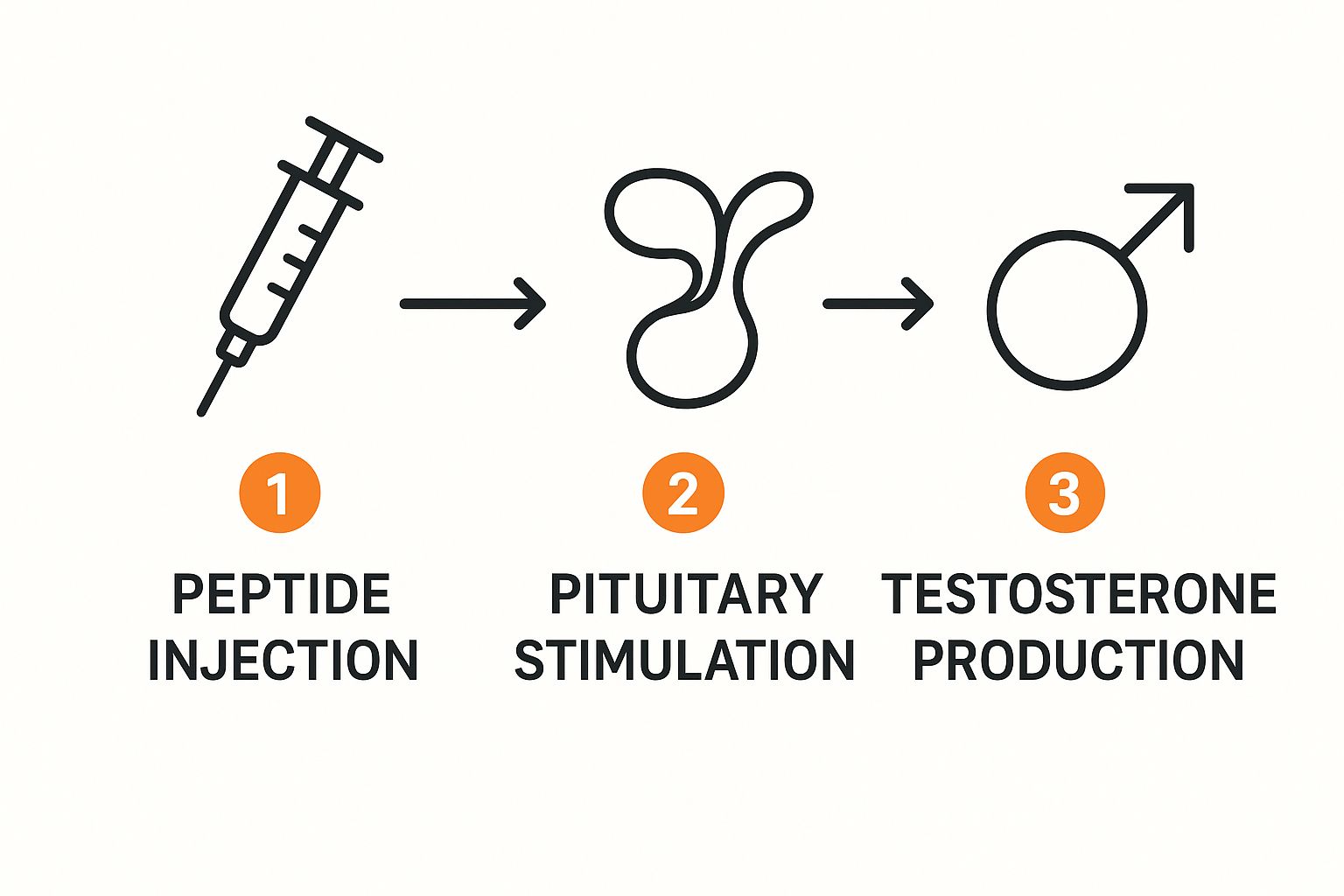
As the infographic makes clear, the peptide isn't the hormone itself. It’s the catalyst that sets off the body's own powerful hormone production cascade.
Stimulating Your Own Supply
The core advantage of using peptides for testosterone is this focus on endogenous production—making the hormone inside your own body. This approach helps you avoid shutting down your natural hormonal axis, which is a common and serious concern with direct testosterone therapies. This method works with your body’s biology, not against it.
This biological harmony is precisely why peptide therapy is gaining so much traction. By using GHRH and GnRH analogs to gently stimulate the HPG axis, therapies can minimize the risk of suppressing your natural function. This trend aligns with market forecasts showing peptide-based boosters contributing to a market CAGR of up to 10.5%, fueled by a surge in search interest for testosterone solutions through 2024–2025.
By acting as a trigger rather than a replacement, peptides encourage the body to regulate its own hormone levels. This can lead to a more balanced and sustainable outcome, as the body's natural feedback loops remain active and functional.
For instance, certain peptide combinations are specifically designed to create a powerful, synergistic effect that supports this natural axis. You can learn more about how specific peptide blends like CJC-1295 + Ipamorelin work together to optimize these signals. The entire method is about restoration, not just replacement.
A Guide to the Top Testosterone-Boosting Peptides
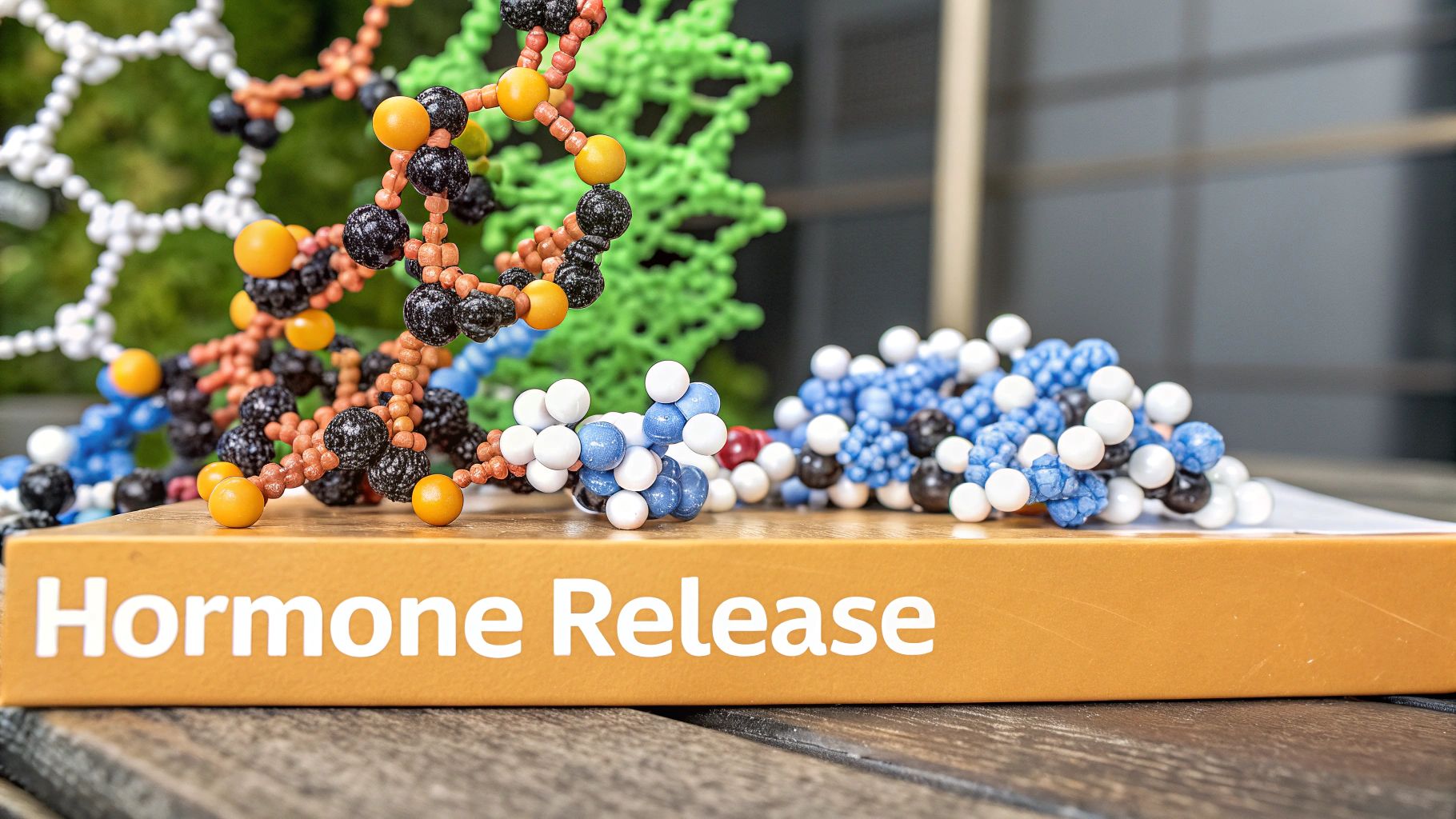
Diving into the world of peptides can feel a bit overwhelming, but it gets much simpler once you understand the main players. When it comes to raising testosterone, not all peptides are created equal. They take different paths to get to the same goal, and we can sort the most effective peptides to increase testosterone into two main camps based on how they operate.
Some peptides are like a direct order to your pituitary gland, telling it to pump out more Luteinizing Hormone (LH)—the primary signal for your testes to make testosterone. Others take a more scenic route, improving foundational things like sleep quality and body composition. This creates an environment where your body can naturally produce hormones more efficiently.
Direct HPG Axis Stimulators
Think of these peptides as a dedicated hotline to your body's hormonal command center. They work directly with the Hypothalamic-Pituitary-Gonadal (HPG) axis, sending a specific request to ramp up the hormones that kickstart testosterone synthesis. They’re precise, powerful, and get right to the source.
H3: Gonadorelin
Imagine Gonadorelin as a perfectly cut key for the GnRH receptor in your pituitary gland. It flawlessly mimics the body's own Gonadotropin-Releasing Hormone (GnRH), directly instructing the pituitary to release a pulse of LH and FSH. This is the most direct signal your body can get to fire up testosterone production.
H3: Kisspeptin
If Gonadorelin is the direct order, Kisspeptin is the master controller deciding when to send that order. It works a step higher in the chain, regulating the entire hormonal cascade before GnRH is even released. That’s why it's often called a "master regulator" of the reproductive system—it ensures everything is firing in a coordinated, healthy rhythm.
Indirect Support Through Anabolic Optimization
This second group of peptides doesn't go straight for LH production. Instead, they focus on building a powerful anabolic environment in your body—one that’s primed for growth, repair, and peak performance. A body that sleeps deeply, recovers quickly, and maintains a healthy body composition is naturally going to be better at producing testosterone.
These peptides work by stimulating the release of Growth Hormone (GH), which triggers a cascade of benefits that indirectly support healthy T levels.
By improving foundational health metrics—such as deep sleep, metabolic efficiency, and lean muscle mass—these peptides create the ideal biological conditions for your endocrine system to thrive. Healthy testosterone is often a welcome result of a body running at peak performance.
The interest in these compounds is exploding. Online searches for peptides on major supplement retail sites shot up by over 550% in early 2025, and 41% of consumers reported a greater awareness of peptides compared to previous years. This trend is especially strong among men over 30 looking for alternatives to traditional TRT.
The men’s health supplement market, which includes peptides, was valued at USD 72.8 billion in 2024 and is projected to hit over USD 183 billion by 2034. You can discover more insights about this growing market from Global Market Insights.
Popular Growth Hormone Peptides
The go-to strategy for boosting GH often involves combining two different types of peptides to create a powerful synergy. This is commonly known as "stacking."
- Growth Hormone Releasing Hormones (GHRHs): Peptides like CJC-1295 tell the pituitary gland to release a steady, natural "bleed" of growth hormone. They help establish a higher baseline level of GH around the clock.
- Growth Hormone Releasing Peptides (GHRPs): Peptides like Ipamorelin work on a different receptor to trigger a strong, clean pulse of GH. They’re highly selective, so they don’t mess with other hormones like the stress hormone cortisol.
When you put CJC-1295 and Ipamorelin together, you get both a sustained elevation and a strong pulse of growth hormone. This one-two punch is incredibly effective for improving sleep, speeding up recovery, shedding body fat, and building lean muscle—all of which help create an environment where testosterone can flourish.
Comparing Popular Testosterone-Boosting Peptides
To make it easier to see how these peptides stack up, this table breaks down their primary functions and best-use cases.
| Peptide | Primary Mechanism of Action | Key Benefits | Best For |
|---|---|---|---|
| Gonadorelin | Directly mimics GnRH to stimulate LH and FSH release from the pituitary gland. | Directly increases testosterone production and can help restore HPG axis function. | Individuals seeking a direct and potent stimulus for natural testosterone production. |
| Kisspeptin | Acts as a master regulator of the HPG axis, controlling GnRH release. | Provides foundational support for the entire reproductive hormone cascade. | Those looking to support the overall health and rhythm of their hormonal axis. |
| CJC-1295 | A GHRH analog that provides a sustained increase in baseline growth hormone levels. | Enhances recovery, promotes lean muscle, and improves sleep patterns over time. | Building a long-term anabolic state that indirectly supports hormone balance. |
| Ipamorelin | A GHRP that creates a strong, clean pulse of growth hormone with minimal side effects. | Improves sleep depth, aids in fat loss, and supports tissue repair without raising cortisol. | Achieving immediate benefits in recovery and body composition with a favorable safety profile. |
By understanding these different tools, you can start to see how certain peptides might align with your specific goals, whether you need a direct hormonal kickstart or a broader improvement in your body’s overall anabolic state.
Understanding Dosing Protocols and Administration
Knowing which peptides might help raise testosterone is only half the battle. Figuring out how to use them safely and effectively is where the real expertise comes in. This isn't a "more is better" game. To get results while keeping risks low, you have to nail the dosing, administration, and cycling.
Most of these peptides are delivered through a subcutaneous injection. This simply means injecting the peptide into the fatty tissue right under the skin, usually around the abdomen. While it sounds straightforward, it demands precision and a strict commitment to sterile techniques to avoid any chance of infection.
Mastering Administration and Dosing
Before we go any further, let's be crystal clear: any peptide protocol requires professional medical supervision. The information here is purely for educational purposes. A qualified doctor is the only person who can determine your specific dosage, and they'll base it on your blood work, overall health, and what you're trying to achieve.
For a deeper dive into the math and measurements, our complete peptide dosage guide can offer more clarity. However, let's walk through some general principles so you understand the "why" behind the common protocols.
- Reconstitution: Peptides almost always arrive as a freeze-dried powder (a process called lyophilization). Before use, you have to mix this powder with bacteriostatic water. This is called reconstitution, and it needs to be done gently to avoid damaging the fragile peptide molecules.
- Dosage Measurement: Doses are measured in micrograms (mcg) and administered with a tiny insulin syringe marked in units. Converting micrograms to units is a critical step that a medical professional will walk you through to ensure you get it right every time.
- Injection Site: The abdomen is a popular spot because it’s easy to reach and has plenty of subcutaneous fat. It’s important to rotate where you inject each time to prevent any irritation or tissue buildup.
The Art of Cycling and Pulsatile Dosing
Peptide protocols are not designed to be run forever. Your body is an incredibly adaptive machine, and if you continuously stimulate it in the same way, you'll eventually see diminishing returns or even unwanted side effects. This is where smart cycling and dosing strategies come into play.
Think of it like working out. You wouldn't lift your absolute max weight every single day without a break. Your body needs periods of intense work followed by periods of recovery to adapt and get stronger. Peptides operate on a similar principle.
Cycling peptides—using them for a set period and then taking a break—prevents your body’s receptors from becoming desensitized. This ensures the peptides remain effective and allows your natural hormonal systems to recalibrate, preventing potential dependency or shutdown.
This concept is absolutely vital for peptides that directly stimulate the HPG axis. Take Gonadorelin, for example. It's often given in a pulsatile fashion. This means using it in a way that mimics the body's own natural, rhythmic release of GnRH. A constant, non-stop signal would just overload the pituitary gland, causing it to become less responsive over time—the exact opposite of what you want.
Stacking for Synergistic Effects
One of the most powerful strategies in peptide therapy is "stacking"—using two or more different peptides together to create a result that is far greater than the sum of its parts. This is a go-to practice for those looking to increase testosterone indirectly by optimizing their growth hormone levels.
The classic stack combines a GHRH with a GHRP:
- GHRH (like CJC-1295): This peptide works to increase the total amount of growth hormone your pituitary gland can release. Think of it as increasing the size of your GH reservoir.
- GHRP (like Ipamorelin): This peptide then sends a strong signal telling the pituitary to release a pulse of that stored GH. It’s like opening the floodgates.
When you use them together, this one-two punch can trigger a growth hormone release that is 3-5 times more powerful than using either peptide by itself. This amplified GH release supports deeper sleep, faster recovery, and better body composition—all of which create the ideal physiological environment for your body to produce testosterone more efficiently.
This synergistic approach really shows the precision of peptide therapy. It’s not about blasting your body with a single, overwhelming signal. Instead, it's about using multiple, targeted inputs to gently guide your system toward its optimal function. And, as always, any stacking protocol must be designed and monitored by a healthcare provider to make sure it's perfectly aligned with your unique biology and health goals.
Navigating Safety and Potential Side Effects
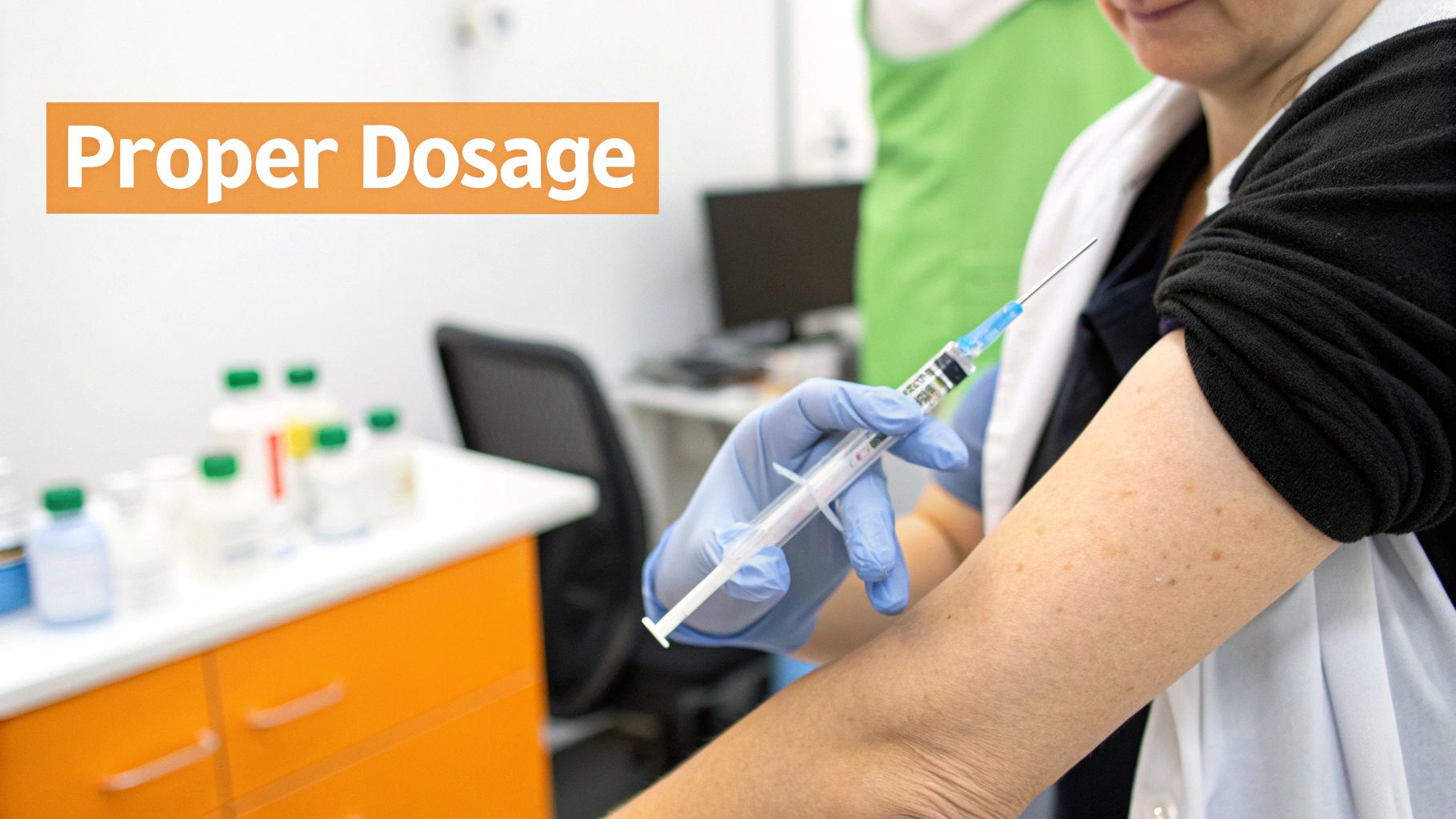
While the idea of using peptides to increase testosterone is exciting, we need to have a frank conversation about safety. It’s non-negotiable. It’s true that peptides generally carry a much better safety profile than old-school anabolic steroids, but it’s a huge mistake to assume they’re completely harmless.
Knowing the potential side effects—and how to handle them—is just as crucial as understanding the benefits. Different types of peptides come with their own unique rulebooks. For those that nudge growth hormone, the side effects are usually pretty minor and temporary. But for peptides that directly interface with your hormonal command center, the stakes are higher, and you have to be disciplined.
Side Effects of Common Peptide Classes
The side effects you might run into are entirely dependent on the specific peptide you’re using. The two main categories for testosterone support—GHRH/GHRPs and GnRH analogs—influence the body in completely different ways.
Let's start with Growth Hormone Releasing Hormones (GHRHs) and Peptides (GHRPs), like CJC-1295 and Ipamorelin. Their common side effects are mostly tied to the increase in growth hormone itself. These can include:
- Temporary Water Retention: Some guys notice a bit of puffiness, especially in their hands and feet. This usually settles down as the body acclimates.
- Increased Appetite: Certain GHRPs can kick hunger into overdrive, which could be a good or bad thing depending on your goals.
- Tingling Sensations: A mild pins-and-needles feeling in your hands or feet (paresthesia) can pop up after an injection, but it’s typically short-lived.
- Injection Site Reactions: A little redness, itching, or swelling right at the injection spot is possible but usually clears up fast.
These are generally mild issues that often fade with consistent use. The real need for caution comes with peptides that directly manipulate the HPG axis.
With GnRH analogs like Gonadorelin, the biggest risk is pituitary desensitization. If you use them continuously without a smart cycling plan, you can overwhelm the pituitary's receptors. This makes the gland "deaf" not only to the peptide's signal but also—and more importantly—to your body's own natural GnRH. This is exactly why a pulsatile dosing schedule and planned off-cycles are absolutely vital to keep the system responsive and effective.
The Single Most Important Safety Factor: Sourcing
Forget any potential side effect from a specific peptide for a moment. The number one risk, bar none, comes from where you buy it. The peptide market is an absolute minefield of unregulated products sold on "research chemical" websites. These sources offer zero guarantees about what you're actually putting into your body.
The purity, dosage, and sterility of a peptide are not things you can compromise on. Sourcing from an unverified online seller is a gamble with your health, as these products can be under-dosed, contaminated with harmful substances, or contain something else entirely.
Regulatory bodies have repeatedly warned about unapproved synthetic peptides, pointing out that their quality and safety are a complete unknown. Products sold illegally online could be laced with toxic ingredients or be outright fakes, posing a massive health risk.
The only way to know you are using a safe, effective, and correctly dosed product is to get it through a legitimate medical channel. This means working with a qualified healthcare provider who can write a prescription to a reputable, regulated compounding pharmacy. These pharmacies are held to incredibly strict quality control standards, ensuring the product that arrives at your door is pure and sterile. This transparent, medically supervised path is the only responsible way to explore peptide therapy, turning a potential risk into a calculated and well-managed health strategy.
Common Questions About Testosterone Peptides
Diving into the world of peptides is bound to bring up some practical questions. Once you move past the science and start thinking about real-world use, it’s completely normal to wonder about results, safety, and the law. We’ve pulled together some of the most common questions to give you clear, straightforward answers and help you navigate this space with confidence.
How Quickly Can You See Results from Testosterone Peptides
This is probably the first thing everyone asks, but the answer isn’t the same for everyone. How fast you see results depends on the specific peptide you’re using, your own unique biology, the dosage, and lifestyle factors like your diet and workout routine. Peptides aren't an overnight fix; they work by encouraging your body’s own systems, which is a gradual process.
Think of the results unfolding in two distinct phases:
- Short-Term Subjective Feelings (2-4 weeks): The first things people usually notice are the subjective benefits. This often includes better sleep quality, an improved mood, more consistent energy levels, and sometimes, a welcome uptick in libido.
- Long-Term Measurable Changes (2-3+ months): The physical changes you can actually measure—like an increase in lean muscle, a drop in body fat, or a significant jump in serum testosterone—take longer to show up. You’ll typically need to stick with a protocol for at least a few months to see these more profound results.
The only way to know for sure if a protocol is working is through before-and-after blood work. This is an absolutely essential part of any medically supervised plan.
Are Peptides for Testosterone Legal to Purchase
The legal side of peptides is complicated, and it changes depending on where you live. In the United States, the situation is especially tricky. You’ll see many peptides sold online labeled "for research purposes only," which puts them in a legal grey area. These products are not approved by the FDA for you to buy and use like a regular supplement.
Buying from these unregulated research sites is a huge gamble. There’s no guarantee of the product's purity, dosage, or even that it’s sterile. On the other hand, some peptides like Tesamorelin are FDA-approved, but they are only available as prescription drugs for very specific medical conditions.
The only legitimate and safe way to get peptides for personal use is through a licensed healthcare provider. A doctor can properly evaluate your health, decide if peptide therapy is right for you, and write a prescription to a regulated compounding pharmacy that produces high-quality, sterile products you can trust.
Can Women Use These Peptides for Hormone Balance
While women absolutely use peptide therapy, the specific peptides and protocols are completely different. Peptides designed to directly crank up testosterone production, like Gonadorelin, are generally not suitable for women unless prescribed by an endocrinologist for a very specific medical reason.
Women often use other types of peptides to achieve different goals, such as:
- Supporting natural growth hormone levels for better recovery and body composition.
- Improving skin elasticity and boosting collagen for anti-aging benefits.
- Aiding in fat loss and supporting metabolic health.
Any woman interested in exploring peptides should consult with a physician who specializes in female hormone health. They can create a safe and effective protocol that’s tailored to her unique biology.
Is Post Cycle Therapy Needed After Using Peptides
Post Cycle Therapy, or PCT, is a term from the world of anabolic steroids. It’s used to help kickstart the body’s own testosterone production after a cycle of compounds that shut it down. For most peptides used to support testosterone, a formal PCT is not necessary.
This is because these peptides work by stimulating your body's own hormonal systems, not by replacing them. Peptides like CJC-1295 and Ipamorelin don't suppress your natural production. However, if GnRH analogs are used improperly, they could potentially desensitize the pituitary receptors. In that scenario, the solution isn't a PCT but a planned "off-cycle" or break from the peptide, which is usually all that’s needed for the system to recalibrate on its own.
Ready to explore how a medically guided approach to peptide therapy can help you reach your health goals? At Elite Bioscience, we provide safe, high-quality, and professionally supervised hormone and peptide therapies.
Discover Your Personalized Therapy Plan at elitebioscience.co
